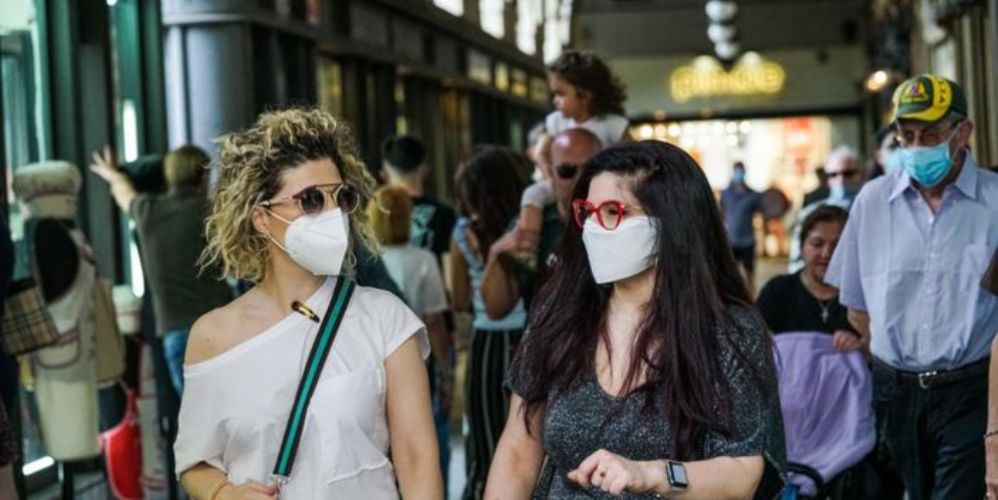The anti coronavirus measures decided by the Conte government continue to be discussed, not only on the political level but also on the health one. This is the case, for example, of the obligation to wear masks outdoors. According to an illustrious public health doctor such as Alberto Donzelli, specialist in Hygiene and Preventive Medicine and former member of the Higher Health Council, this would even be a counterproductive measure. «I don’t want to be exploited by the deniers – presses the microphones of DiariodelWeb.it – but I do not even think that I am silent in the face of what seems wrong to me and must be corrected as soon as possible. It being understood that, as long as the rules are in place, they must be respected and I do not invite anyone to violate them “.
Doctor Alberto Donzelli, health and political institutions have changed their minds on the masks several times during this pandemic. At first they told us to use them only if infected, then only indoors, now also outdoors. Is there a reason behind these constant turnarounds?
Initially, it could have a reason not to encourage a wide use of masks, because stocks were limited and should be reserved for the categories to be protected as a priority, namely sanitary ware. Then the government adopted the obligation to wear masks indoors, that is, in environments where the risk of the exchange of germs could be higher, which was rational. The further turning point, that of making them mandatory outdoors, on the other hand, in my opinion, completely lacks reasonableness and scientific basis.
For what reason?
In public health, where I have practiced for all my professional life, a measure, in order to be made universal and mandatory, requires at least three conditions: that there is strong evidence of its benefits, that these expected benefits outweigh any harm or inconvenience and, in lack of these two conditions, that there are at least logical reasoning to support this behavior. These three conditions, in the case of outdoor masks, are absolutely missing.
How does he say it?
The scientific researches with the highest validity are randomized controlled ones. There are few studies on masks at the community level, and the four major reviews all conclude that there is no adequate evidence of their effectiveness. Then, finally, a highly valid research on pilgrims in Mecca was published, carried out in conditions of high crowding, which alone has a greater number of participants than all the others put together.
And what was the outcome of this research?
The hypothesis was that masks were worth wearing if there was at least a 50% reduction in respiratory infections. Instead, the result was contrary to the expectations of the researchers themselves: there was a trend of increasing respiratory infections in the group that wore the masks.
Are you saying that the masks were even harmful?
Particularly interesting is that, when comparing the pilgrims who wore the masks for all four days of observation, with those who did not wear them even once, the gap was even greater: 30% more clinical infections. The confidence interval was 1.0 to 1.8. This means that, at best, the masks did not give any net effect; at worst they increased respiratory infections by 80%.
But how can this be explained?
The first thing a serious epidemiologist does is to take note of the response of this research, then to try to interpret it. There is no doubt that the masks shield the droplets emitted by people who breathe or speak. But there are also adverse effects. In my opinion the main problem is that the shielded viruses remain on the mask, so the person wearing it continues to breathe them.
In short, what is generated in the body of each of us if we breathe in a mask when we have been infected by the virus?
Breathing out the germs that are multiplying in the lungs is a mechanism that, in the course of evolution, has always contributed to lowering the microbial load in our respiratory tract. Continuing to inhale them for hours with the mask, on the other hand, increases the cumulative charge, probably much more than in short conversations with contagious subjects. Not only that, but by continuing to exhale against an unnatural barrier, the virus risks pushing itself deeper into the lungs, where it shouldn’t go. Especially in the first ten days, that is when there are no preformed antibodies, and the most effective defenses are the innate ones of the upper respiratory tract.
Is that why you argue that there is no point in wearing masks outdoors?
Indoors, with many people, in a poorly ventilated environment it is reasonable to put on masks and try to stay there as little as possible, as a precautionary principle. But the logic outdoors is to oxygenate our lungs.
And wouldn’t putting the masks outdoors expose us to risks?
Today I read an article in which the ten places of high spread of the infection were listed: the first that stood out was a relatively crowded street, with a person who lowered the mask. In reality, the risk on the street is irrelevant: the probability of not only having a positive but actually contagious person next to you can be estimated in the order of one in a thousand. That this person will talk to us at a relatively close distance for a quarter of an hour, the time that the Immuni app records as a risk situation, is relatively unlikely. Therefore, in this situation, the risk of occasional matching does not exist. Instead, the risk of harboring any pathogenic germ is much higher, even not Covid, which multiplies with masks. Thus, conditions that could have been trivial risk becoming more serious, as a result of a measure that is also a compromise for health purposes.


